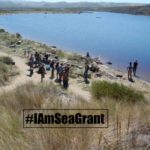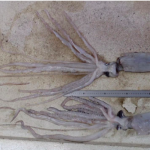Ocean Nourishment Corporation of Sydney, Australia just got the green light to dump several hundred tons of industrially-produced urea in to the Sulu Sea between the Philippines and Borneo. Assuming you urinate about 1.5 liters a day (range is 800ml to 2000ml) that is about the same amount of 500 years of your collected urine…if you actually decided to collect your urine. Several international civil societies called upon the London Convention, the UN committee that regulates ocean dumping to prevent the experiment. Again the idea, is to promote phytoplankton growth and eventually sequester carbon in the deep. Keep in mind that ONC and Planktos are for-profit companies. Another common theme is the targeting of Indo-Pacific arenas with lax regulations and oversight. This is the same strategy Nautilus Mining seems to be employing.
“The global South is once again a dumping ground for risky technologies – this time our oceans are being threatened by high-risk geoengineering schemes that are rushing forward without public consultation or intergovernmental oversight,” said Neth Dano of Malaysia-based Third World Network. “A few months ago we learned that Planktos, Inc. wants to dump iron particles in the ocean near the Galapagos – now Southeast Asian coastal waters are the target for experimental urea dumping. It’s disgraceful that carbon-trading profiteers are marketing these experiments as humanitarian projects to feed hungry people and arrest climate change,” said Dano.
Keep in mind also that the International Panel on Climate Change (IPCC) has labeled these schemes risky and is concerned about the potential for toxic tides and lifeless oceans from anoxic conditions.
Ruperto Aleroza of Kilusang Mangingisda, the Philippine Fisherfolks Movement, represents local people whose livelihoods are threatened by Australian company Ocean Nourishment Corporation, who already have plans to dump synthetic urea in the oceans around the Philippines said: “This technology is unacceptable. It is a dangerous technology that could imperil the marine environment which is the main source of survival and
livelihood of poor fisherfolks in the Philippines.”
Agenda Item 12 from the US to the London Convention states concern of Planktos operations in international waters noting that
Planktos, Inc. was not able to provide the EPA with any information relating to an evaluation by the company or by any regulatory body of the potential environmental impacts of their planned iron addition projects, such as:
1 the estimated amount and potential impacts of iron that is not taken up by phytoplankton;
2 the amounts and potential impacts of other materials that may be released with the iron;
3 the estimated amounts and potential impacts of other gases that may be produced by the expected phytoplankton blooms or by bacteria decomposing the dead phytoplankton;
4 the estimated extent and potential impacts of deep ocean hypoxia (low oxygen) or anoxia (no oxygen) caused by the bacterial decay of the expected phytoplankton blooms; or
5 the types of phytoplankton that are expected to bloom and the potential impacts of any harmful algal blooms that may develop.
I hope this post leaves you more than just a little concerned.






What kind of preliminary studies have been done concerning these various schemes (iron, urea, magic fairy dust, etc)? At what scale has something like this been done – 2 L flasks? 60 gallon barrels? small ponds?
The scale at which these companies are proposing to carry out these “experiments” seem like a large jump from simply theoretical or small-scale lab-based studies.
Iron enrichment experiments have been done at fairly large scales but I don’t think they approach the quantity these companies want to use. Urea (i.e.) nitrogen I think has been limited to much smaller scales than even iron experiments
Isn’t nitrogen runoff one of the prime suspects in the Gulf of Mexico’s dead zone? Are there any indicators that dumping a bunch of urea into the ocean won’t do something similar?
Dustin,
Yes nitrogen runoff and phosphorous from the Mississippi increase phytoplankton production which increases carbon input to the seafloor. This additional food increases the activity levels of organisms, increases reproduction which leads to more organisms, causes organisms to get bigger, attracts organisms to the area, etc. All of these lead to a net gain in respiration or O2 usage which strips the oxygen out of the water.
You would think they could pick a better place to conduct this experiment than the global epicenter of marine biodiversity.
Coral species in the Philippine part of the Coral Triangle outnumber Caribbean species by nearly ten to one.
The Thermodynamics of sea surfce is complex. Unlike simple closed agri systems there are FLOWS inherent both into and out of the target seeding regions.
Those flows are not only 3D mass tranfers but also energy transfers along entropy gradients. Now iron flocculates will seed plankton growth as a fertiliser but they will also increse the entropy of the target area making it susceptible to unstable atmospheric/sea suface coupled interactions.
The magnitude and direction of the interaction vectors will depend on position of latitude and existing thermodynamic properties of the target area.
Those parameters including relative entropy are difficult to measure so target trials are likely to be hit and miss. This will have the net effect of cancelling the proposed experiment. A huge loss of time, money and effort.
A true experiment would first create large engineered wetlands off a coastal target area in a high plankton bearing latitude. This would filter runoffs and establish a baseline low enopy target artea. Then the iron flocculates would not create unstable high entropy interactions and the experiment may proceed as planned. However it is likely that the lower entropy from clean runoffs will increase plankton growth by itself. This must be weighed against slightly increased growth where residual iron will harm higher order organisms.
In fact none of the Lovelock sponsored global anti-warming schemes will ever work. They all increase the entropy of the planet by pollution or by lowering the net energy of the quasi-closed Earth thermodynamic system.
It is well that none are cost feasible because they would all lead to a world with higher entropy that would steadily converge to a deadly thermal stasis by the second law of thermodynamics.
Its a bit like removing petrol and putting sand in an engine to stop it overheating. That engine would not overheat but thats because it would be dead.
Efficient engines must have plenty of input energy(petrol) and surgically clean interiors by use of coolant and oil filtration to stop clogging the thermostat and frictional overheating. So too the Earth. The Earth’s coolant filter is wetlands. Engineered wetlands are the BMP (Best Management Practice) for wetland renewal. The thermostat is marine eco-systems and the two ways to reburgeon them is to filter all wastewaters across the planet using millions of engineered wetlands(EWBs), and to stabilise world population to less than 7billion people by one child per family policies.The Earths sump is the sea bed and its vertical circulation lubricates ecosytems and the atmosphere with cool waters and nutrients. It is fortunate that EWBs also serve as a filter for pollutants that interfere with deep ocen circulations. Another filter would be to put an end to long-line and other fishing methods that stir up and destroy delicate sea bed ecology.
The curious thing is that the cost of all those EWBs would be less than just about any one of Lovelock’s 8 or so full scale sponsored schemes.